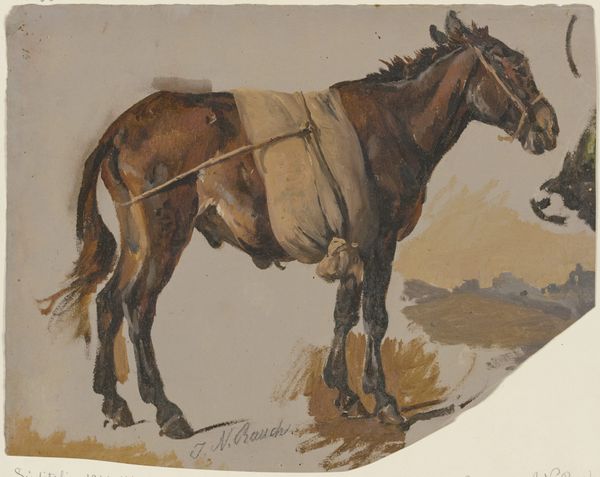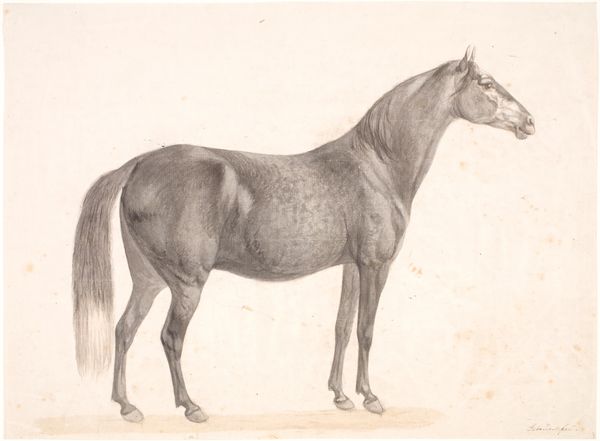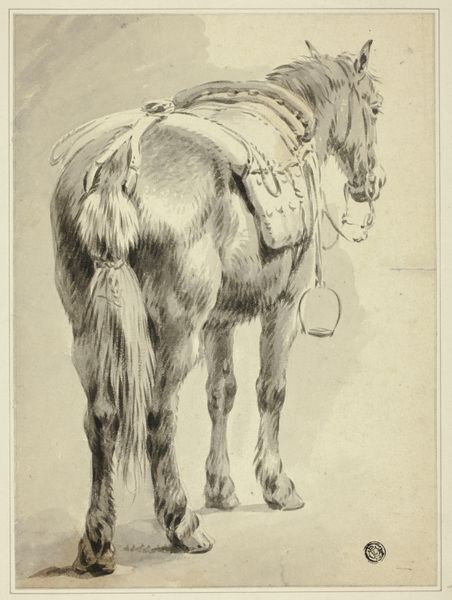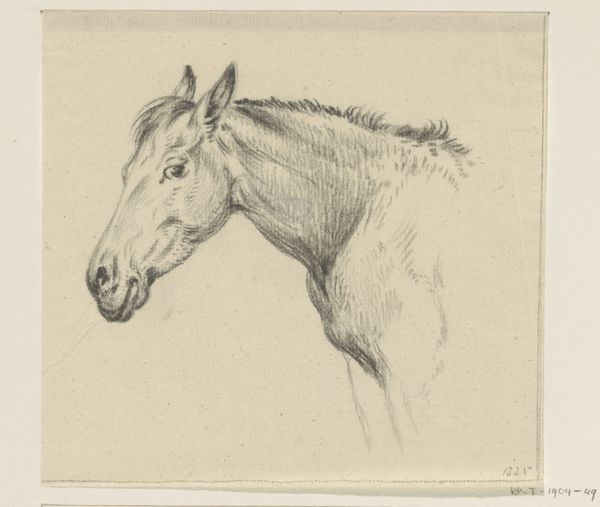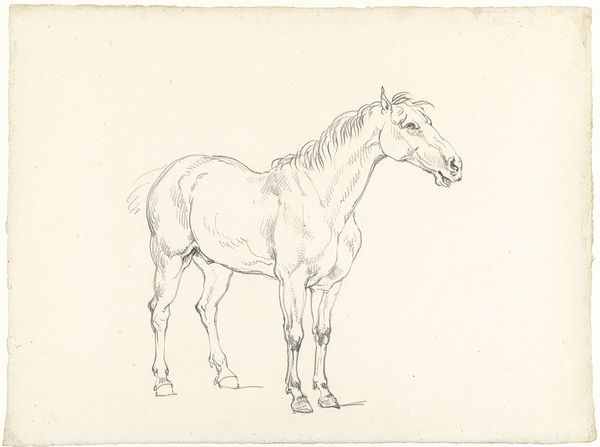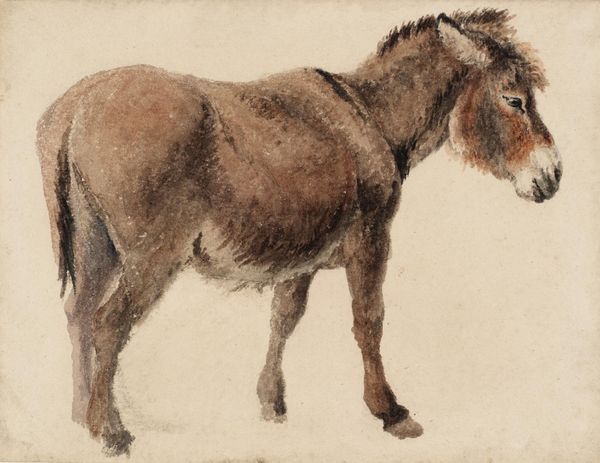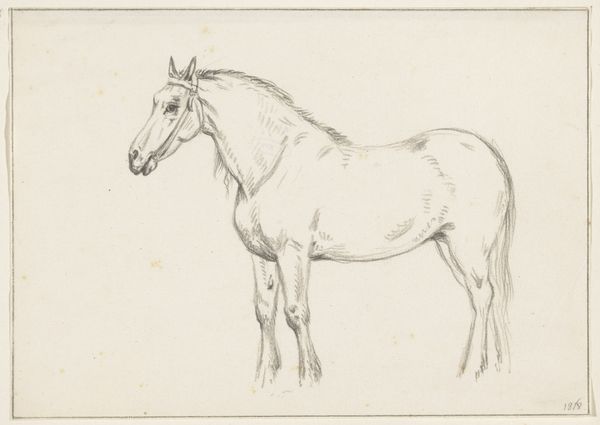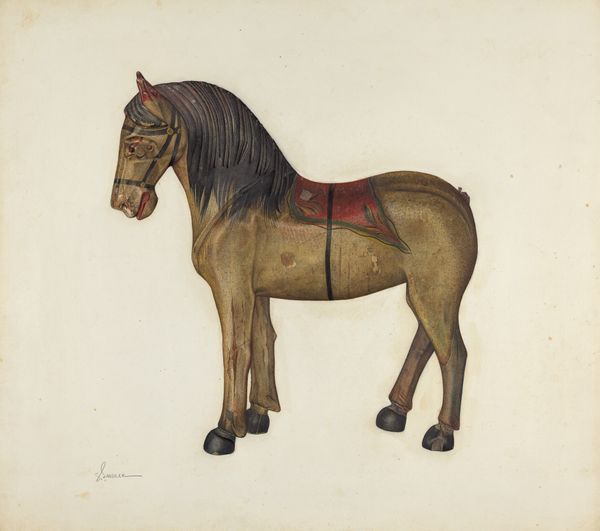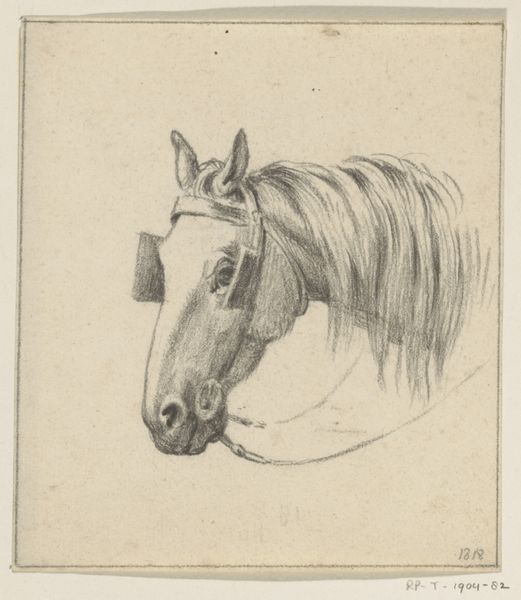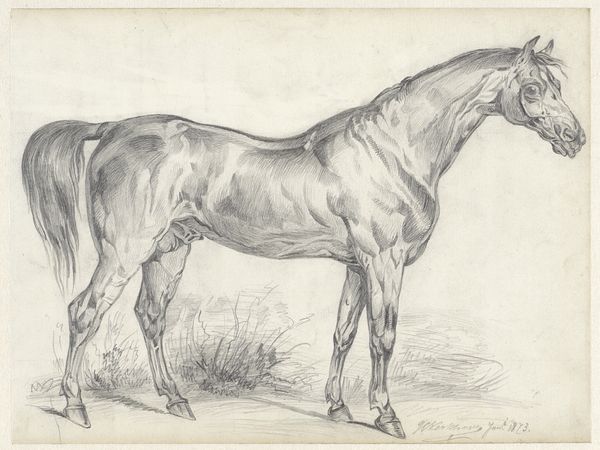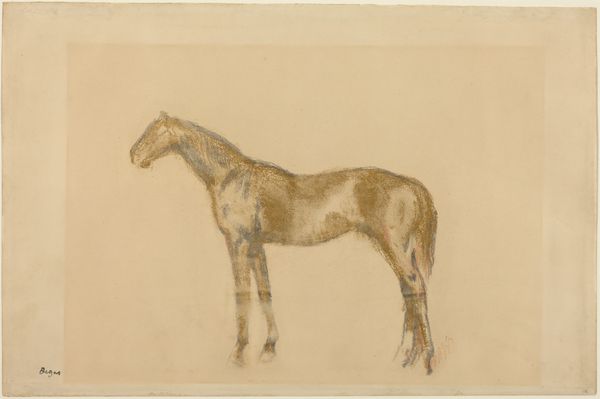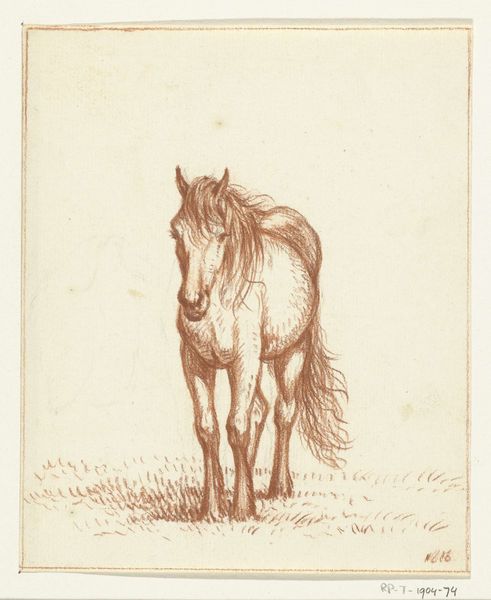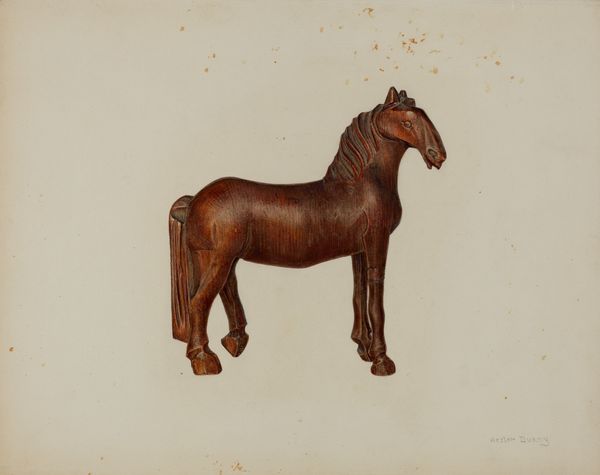
drawing, watercolor, pencil
#
portrait
#
drawing
#
landscape
#
watercolor
#
coloured pencil
#
romanticism
#
pencil
#
watercolour illustration
#
watercolor
Dimensions: 211 mm (height) x 178 mm (width) (bladmaal)
Curator: Here we have Johan Thomas Lundbye's "Et stående føl," a watercolor and pencil drawing completed in 1843. What strikes you about this particular depiction? Editor: There's an undeniable tenderness to it. A vulnerability even. The young foal appears so delicate, its thin legs a bit unsure beneath it. There’s a fragility communicated in those fine lines that really resonates. Curator: It is fascinating to consider Lundbye’s broader artistic output in understanding this piece. He was deeply engaged with Danish nationalism, often imbuing his landscapes with symbols of national identity. How might that perspective shape our understanding of this unassuming work? Editor: Absolutely, Lundbye was clearly tapping into something more profound than just animal portraiture. Romanticism often intertwined with nationalism, seeking to define a people through their connection to nature and the land. But seeing this foal, I think of vulnerability within power structures. Who are the foals now, and what space are we giving them to grow strong? Curator: It's intriguing to place that activist reading onto the work, as Lundbye was definitely influenced by the politics of his time, which advocated certain cultural ideals above others. Yet, here the artist directs his meticulous gaze to a single animal, removed from any explicit nationalist scene. This piece humanizes this vulnerable subject with incredible empathy. Editor: It is the artist's empathy that perhaps provides this opening to understanding this work with a wider view. What does it mean to grant care, tenderness, and artistic skill to render this little life in that moment in history. Is the image accessible to all, or does it perform power dynamics to this very day? Curator: It definitely gives us reason to pause and to reconsider the connections we draw between art, nationalism, and vulnerability. What an invitation for nuanced interpretation, don't you think? Editor: I completely agree. There's always an interplay between historical intention and contemporary reading, and that tension is what makes these works endlessly relevant. It leaves us questioning how history impacts contemporary thought, and vice versa.
Comments
No comments
Be the first to comment and join the conversation on the ultimate creative platform.
